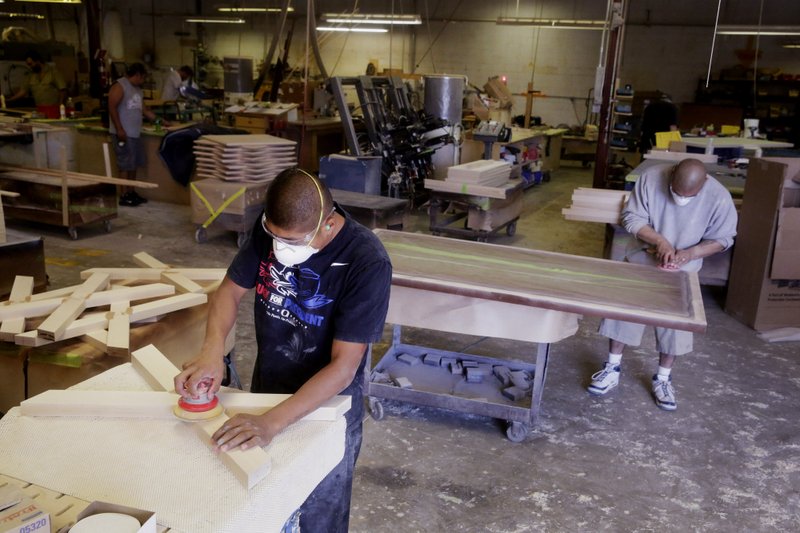WASHINGTON -- Business orders for U.S. factory goods shot up by a record amount in July, reflecting a surge in demand in the volatile category of commercial aircraft.
But outside of transportation, orders actually fell slightly during the month, though the setback was expected to be temporary.
Factory orders rose 10.5 percent in July, the biggest one-month increase on records going back to 1992, the Commerce Department reported Wednesday. Orders for civilian jetliners rose fourfold. But excluding transportation, orders edged down 0.8 percent, and a key category that serves as a proxy for business investment plans fell 0.7 percent.
Manufacturing has been a source of strength this year, helped by robust demand for new cars, other consumer items and business equipment. Economists expect that strength to continue.
The report showed that durable goods, items expected to last at least three years, were up 22.6 percent in July, unchanged from the estimate in a preliminary report last week. Orders for nondurable goods such as paper, chemicals and food were down 0.9 percent in July after a 0.4 percent increase in June.
In addition to the surge in demand for airplanes, orders for motor vehicles and parts rose 7.3 percent, reflecting continued strong consumer demand for new cars and trucks.
But there was slippage in other areas. Orders for primary metals such as steel fell 0.3 percent, demand for machinery was down 1.2 percent, and orders for computers and other electronics products fell 14.7 percent.
Despite this weakness, most economists expect that manufacturing production will provide solid support for economic growth in the second half of this year.
While a key category viewed as a proxy for business investment plans dropped 0.5 percent in July, the dip followed a sizable 5.4 percent increase in June. The government reported last month that investment by businesses in new equipment grew at a solid 10.7 percent annual rate in the April-June period, erasing a decline in the first three months of the year.
Factory output rose for a sixth consecutive month in July, increasing by 1 percent. The gain was led by a jump in production of motor vehicles, furniture, textiles and metals.
In a sign that momentum in manufacturing was continuing, the Institute for Supply Management reported Tuesday that its gauge of manufacturing activity grew in August by the strongest pace in more than three years as factories cranked out more goods and new orders rose.
The index rose to 59 from 57.1 in July. That was the highest reading since March 2011. Any measure above 50 signals that manufacturing is growing.
One potential threat to the optimistic outlook for U.S. manufacturing is a slowdown overseas. Turmoil in Ukraine, the lingering problems from Europe's debt crisis and slower growth in China could all weigh on U.S. exports to key overseas markets.
Business on 09/04/2014

